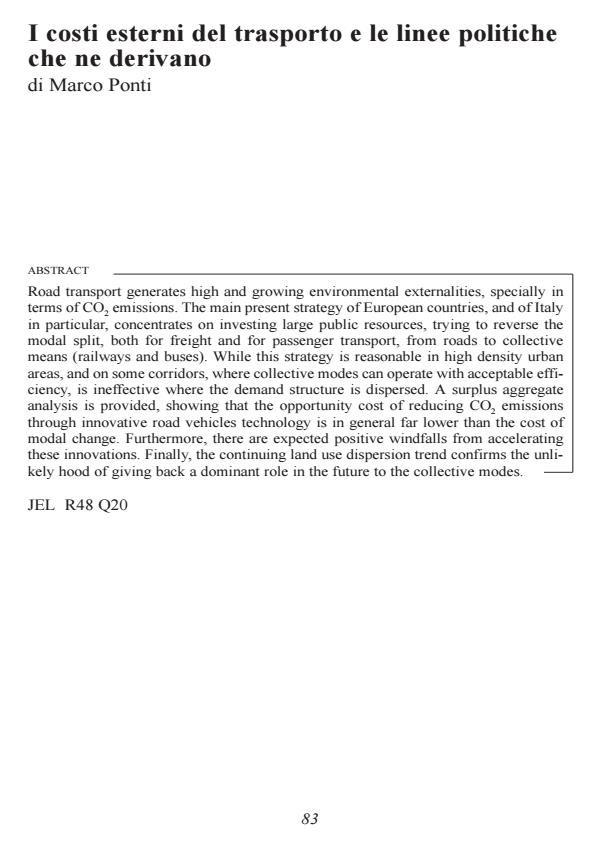I costi esterni del trasporto e le linee politiche che ne derivano
Titolo Rivista ECONOMIA PUBBLICA
Autori/Curatori Marco Ponti
Anno di pubblicazione 1 Fascicolo 2000/5
Lingua Italiano Numero pagine 15 P. Dimensione file 1194 KB
DOI
Il DOI è il codice a barre della proprietà intellettuale: per saperne di più
clicca qui
Qui sotto puoi vedere in anteprima la prima pagina di questo articolo.
Se questo articolo ti interessa, lo puoi acquistare (e scaricare in formato pdf) seguendo le facili indicazioni per acquistare il download credit. Acquista Download Credits per scaricare questo Articolo in formato PDF

FrancoAngeli è membro della Publishers International Linking Association, Inc (PILA)associazione indipendente e non profit per facilitare (attraverso i servizi tecnologici implementati da CrossRef.org) l’accesso degli studiosi ai contenuti digitali nelle pubblicazioni professionali e scientifiche
Road transport generates high and growing environmental externalities, specially in terms of CO 2 emissions. The main present strategy of European countries, and of Italy in particular, concentrates on investing large public resources, trying to reverse the modal split, both for freight and for passenger transport, from roads to collective means (railways and buses). While this strategy is reasonable in high density urban areas, and on some corridors, where collective modes can operate with acceptable efficiency, is ineffective where the demand structure is dispersed. A surplus aggregate analysis is provided, showing that the opportunity cost of reducing CO 2 emissions through innovative road vehicles technology is in general far lower than the cost of modal change. Furthermore, there are expected positive windfalls from accelerating these innovations. Finally, the continuing land use dispersion trend confirms the unlikely hood of giving back a dominant role in the future to the collective modes.
Marco Ponti, I costi esterni del trasporto e le linee politiche che ne derivano in "ECONOMIA PUBBLICA " 5/2000, pp , DOI: